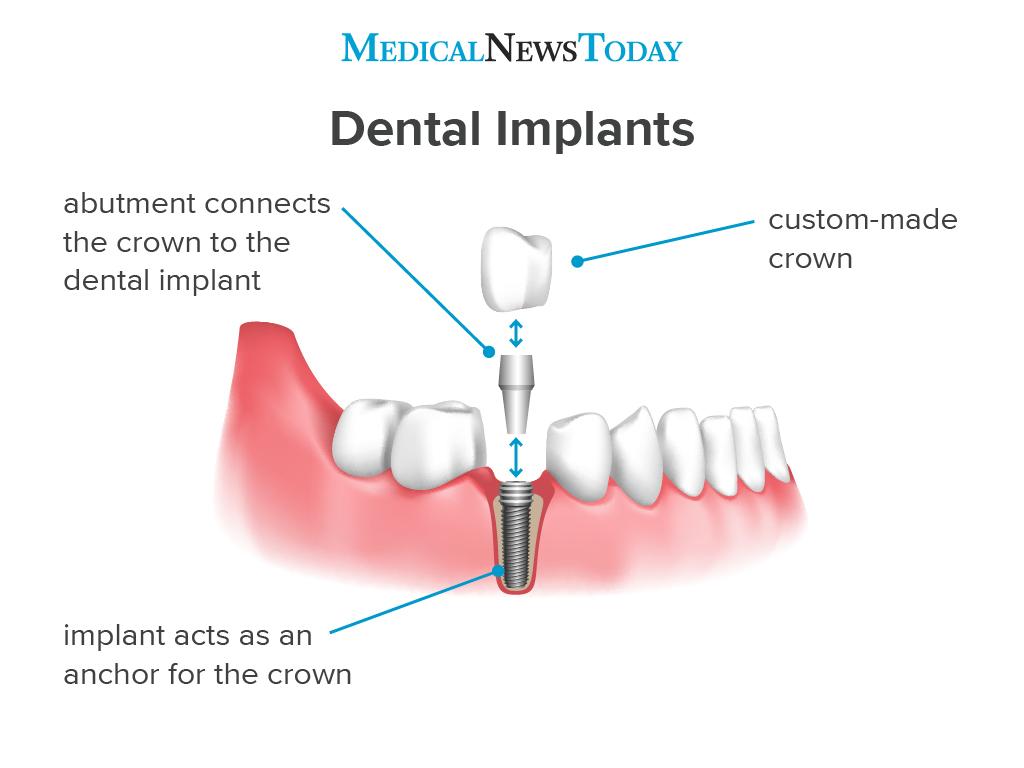Our Dental Sense Diaries
Our Dental Sense Diaries
Blog Article
The 5-Minute Rule for Dental Sense
Table of ContentsLittle Known Facts About Dental Sense.The smart Trick of Dental Sense That Nobody is DiscussingDental Sense Can Be Fun For EveryoneDental Sense for Beginners
are medical devices surgically implanted right into the jaw to recover a person's capacity to eat or their look. They provide support for artificial (phony) teeth, such as crowns, bridges, or dentures. When a tooth is shed because of injury or disease, a person can experience issues such as rapid bone loss, faulty speech, or adjustments to eating patterns that result in pain.Oral implant systems include an oral implant body and dental implant joint and might likewise include a joint fixation screw. Wisdom tooth cavity. The dental implant body is surgically put in the jawbone in place of the tooth's origin. The oral implant abutment is generally affixed to the dental implant body by the joint addiction screw and extends via gums into the mouth to sustain the connected artificial teeth
(http://peterjackson.mee.nu/where_i_work#c2504)Structure of The Oral Implant System choosing dental implants, speak to your dental company regarding the potential advantages and threats, and whether you are a prospect for the procedure. Things to consider: Your overall health is an important consider establishing whether you are an excellent candidate for oral implants, for how long it will take to recover, and for how long the dental implant may stay in area.
Cigarette smoking may influence the recovery process and reduce the long-term success of the dental implant. The recovery process for the dental implant body may take several months or longer, throughout which time you generally have a short-term abutment instead of the tooth. the dental implant treatment: Thoroughly follow the dental health instructions offered to you by your oral copyright.
Dental Sense Fundamentals Explained
Implant failure can result in the requirement for another surgical treatment to fix or change the dental implant system. Restores the ability to chew Brings back cosmetic appearance Assists maintain the jawbone from shrinking because of bone loss Maintains the health of the surrounding bone and gum tissues Assists keep adjacent (nearby) teeth stable Boosts quality of life Damage to surrounding natural teeth throughout dental implant positioning Injury to the surrounding cells during surgical procedure, such as sinus perforation Injury during surgical treatment (as an example, crack of surrounding jawbone) Inadequate function, such as seeming like the teeth do not bite together generally A feeling that the tooth is loosened or twisting in position arising from a joint screw loosening Implant body failing (looseness of the dental implant body) because of systemic infection, which may be more probable in individuals with unrestrained diabetes mellitus due to regional infection in bone and gum tissues supporting the dental implant body as a result of postponed healing, which may be much more likely in clients who smoke Trouble cleansing the periodontals around the implant, resulting in poor dental health Without treatment gum illness Post-surgical numbness as a result of nerve impingement or damages Always inform wellness treatment service providers and imaging specialists that you have dental implants prior to any type of magnetic resonance imaging (MRI) or x-ray treatments.
FDA is not familiar with any type of negative events reported for MRI or x-ray treatments with dental implants. Dental implants systems are typically constructed from materials that follow global consensus requirements of the International Company for Standardization (ISO) or ASTM International. These requirements have details of what makes a safe product.

A dental implant is a structure that changes a missing tooth. With screw-like gadgets, the doctor inserts a dental implant right into the jawbone, and it acts as an anchor for a man-made tooth, called a crown.
Examine This Report on Dental Sense
Some individuals are not qualified for dental implant surgery. It is for oral doctors to operate people with: acute illnessuncontrollable metabolic diseasebone or soft tissue illness or infectionIf these issues are fixed, a person can have the surgery. In, dental surgeons refrain from operating people with: If people with any one of the above undertake oral implant surgical procedure, there is a greater risk of the implant stopping working.

Oral dental implant surgical treatment is a tailored process. It's not the exact same for everyone. The adhering to offers a general summary of what you can expect your dental expert, dental cosmetic surgeon, periodontist or prosthodontist to do: Put the implant surgically. Provide you time to recover. Connect the post and last crown, bridge or denture.
Next off, your specialist will very carefully put the dental implant into your jaw. If your dental implant is near the front of your mouth, your dental expert will make a short-lived tooth for you to put on up until you recover.
Facts About Dental Sense Uncovered
Your provider can inform you what to expect in your scenario. During the healing phase, your jawbone should fuse to the oral implant. This procedure, called osseointegration, is critical for stability and lasting success. This procedure can take anywhere from 3 to nine months. Sometimes, it might take longer.
When your dental implant heals, your dental practitioner can affix the abutment (tiny connector article) and your last repair (crown, bridge or denture). This usually takes regarding one hour to complete and may require a 2nd minor surgery. You should not feel any type of discomfort during your oral implant treatment because your provider will utilize medicine to numb your periodontals.
Report this page